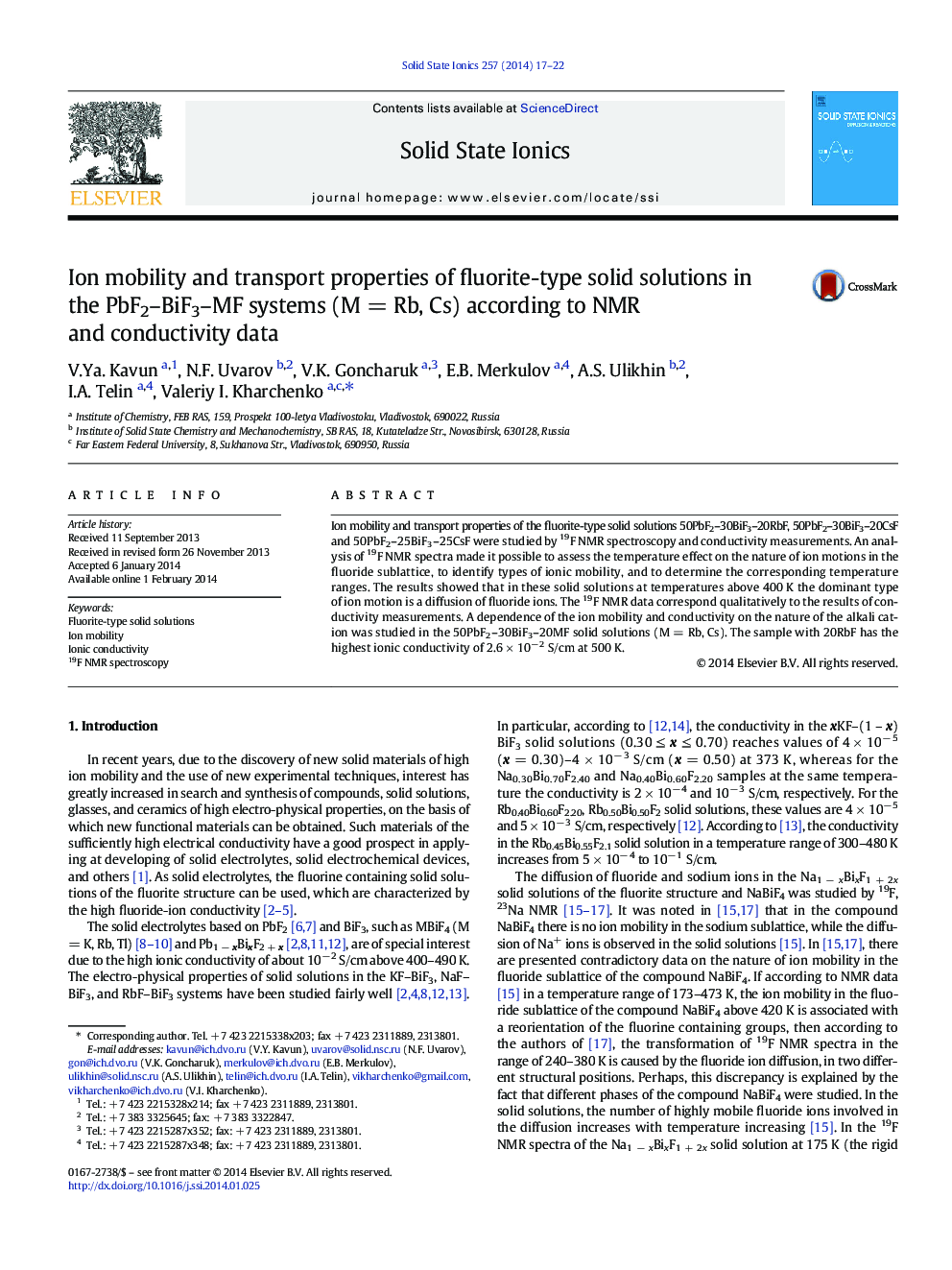| Article ID | Journal | Published Year | Pages | File Type |
|---|---|---|---|---|
| 1295883 | Solid State Ionics | 2014 | 6 Pages |
•Ion mobility in the fluorite-type 50PbF2–30BiF3–20MF solid solutions (M = Rb, Cs).•F− mobility changes with T: rigid lattice → local motion → translational diffusion.•In these solid solutions above 400 K the diffusion of fluoride ions dominates.•The dependence of the ion mobility and conductivity on nature of the alkali cations.•In 50PbF2–30BiF3–20RbF, the highest conductivity is 2.6 × 10− 2 S/cm at 500 K.
Ion mobility and transport properties of the fluorite-type solid solutions 50PbF2–30BiF3–20RbF, 50PbF2–30BiF3–20CsF and 50PbF2–25BiF3–25CsF were studied by 19F NMR spectroscopy and conductivity measurements. An analysis of 19F NMR spectra made it possible to assess the temperature effect on the nature of ion motions in the fluoride sublattice, to identify types of ionic mobility, and to determine the corresponding temperature ranges. The results showed that in these solid solutions at temperatures above 400 K the dominant type of ion motion is a diffusion of fluoride ions. The 19F NMR data correspond qualitatively to the results of conductivity measurements. A dependence of the ion mobility and conductivity on the nature of the alkali cation was studied in the 50PbF2–30BiF3–20MF solid solutions (M = Rb, Cs). The sample with 20RbF has the highest ionic conductivity of 2.6 × 10− 2 S/cm at 500 K.
